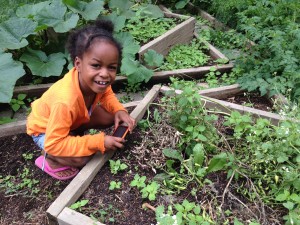Best Practices for School Gardens

Originally appears in the Spring 2016 issue
School gardens are popping up everywhere! Capturing the attention of the media, parent community and global organizations alike, the excitement focused around these initiatives is palpable. While this recent surge is inspiring, it is by no means novel. Using nature to teach students biology, ecology, life cycles, genetics, soil science, etc. has always been a facet of quality education. There are mountains of research that point to the benefits.
Gardening with students can be daunting. School gardens suffer from staff transition, rigorous testing schedules, summer maintenance issues and more, but the rewards far outweigh the challenges. Developing a sustainable school garden program starts with careful planning, acknowledgement of the challenges and devising strategies to overcome them. This article will give you tools to get started.
Keeping a few basic principles in mind will add to the overall sustainability of a garden and allow for the school community to participate in the project. Based on several years of research and experience with dozens of school gardens, we’ve developed a list of basic steps and best practices for school gardens. We encourage you to incorporate them into your own plans for establishing and sustaining a garden at your school.
To view the photo-rich magazine version, click here.
If you are not already a subscriber, please subscribe to read the full article
Mary Dudley is the Youth Education Coordinator at the Civic Garden Center of Greater Cincinnati in Ohio. She has worked with school garden initiatives since 2008 in both temperate and subtropical climates. Mary holds a Master’s Degree in Botany. The Civic Garden Center would like to thank the Haile Foundation for funding our school garden program and research initiative.
Leave a Reply
You must be logged in to post a comment.





